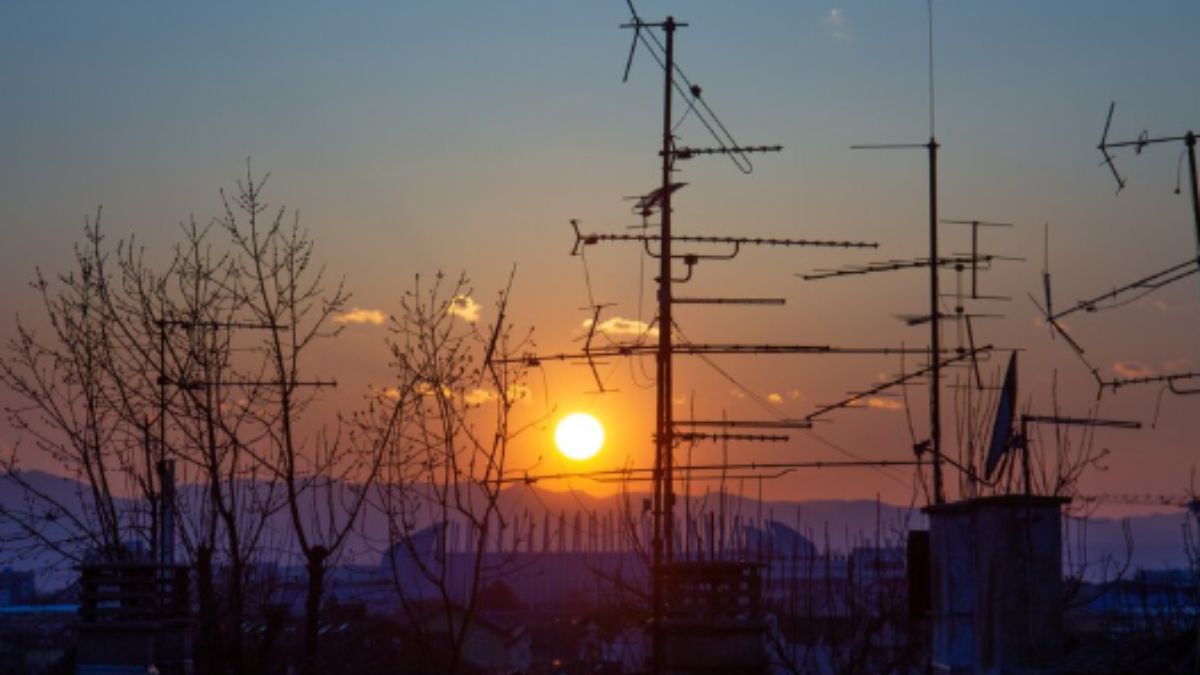Topic
Geisha: Guardians of Japanese Culture or Glamorized Performers?

Step into the captivating world of the geisha, where tradition meets artistry and grace. These enigmatic figures have long fascinated people around the globe with their exquisite beauty, elaborate performances, and timeless elegance. Join us on a journey to explore whether geisha are truly guardians of Japanese culture or merely glamorized performers in today’s society. Let’s delve into the intricate tapestry that is the world of geïsha.
Geisha in Art
Geisha in art has long captivated artists and audiences alike, with their graceful presence and iconic aesthetic. From traditional paintings to modern interpretations, geishas have been a recurring motif in various artistic mediums throughout history.
Their intricate hairstyles, elaborate kimonos, and delicate accessories make them visually striking subjects for artists seeking to capture the essence of Japanese culture. The use of vibrant colors and meticulous details in these artworks often reflects the beauty and mystique associated with geishas.
Whether portrayed in a classic ukiyo-e print or a contemporary mixed-media piece, geishas continue to inspire creativity and fascination among viewers. Each brushstroke or pixel adds another layer to the rich tapestry of representation surrounding these enigmatic figures.
Through art, geishas transcend time and space, becoming timeless symbols of elegance, tradition, and allure. Their enduring presence on canvas serves as a testament to their enduring legacy in both Japanese culture and the world of art.
Pinterest Comments
Scrolling through Pinterest, you can’t help but notice the captivating images of geïshas adorning various boards. The comments section is a treasure trove of opinions and discussions about these enigmatic figures. Some users express admiration for the artistry and grace of geïshas, while others question their historical significance.
There are debates on whether geïshas are true guardians of Japanese culture or merely glamorized performers. Opinions vary widely, with some praising them as cultural ambassadors and others critiquing them as symbols of exploitation.
Interestingly, many commenters delve into the intricate details of geisha attire and traditions, showcasing a deep interest in Japanese culture. It’s fascinating to see how these discussions unfold in a virtual space dedicated to visual inspiration.
Pinterest comments provide valuable insights into the diverse perspectives surrounding geïshas in modern society.
Saatchi Art Geisha Painting
Saatchi Art offers a captivating collection of Geisha paintings that beautifully capture the essence and grace of these traditional Japanese performers. The intricate details and vibrant colors in each painting bring the Geisha to life on canvas, showcasing their elegance and cultural significance. From delicate brush strokes to bold compositions, each piece tells a unique story about this iconic figure in Japanese history.
The artists featured on Saatchi Art skillfully depict the Geisha with respect and admiration, highlighting their role as guardians of Japanese culture. Through these stunning paintings, viewers can immerse themselves in the world of the Geisha, appreciating their artistry and sophistication. Whether displayed in a gallery or adorning your own walls, a Geisha painting from Saatchi Art is sure to make a statement and spark conversation about this timeless symbol of Japan.
Browse through Saatchi Art’s collection today to discover your own piece celebrating the beauty and mystique of the Geïsha.
Singulart Geisha
When it comes to exploring the enigmatic world of geïsha through art, Singulart offers a captivating glimpse into this timeless tradition. The platform showcases a diverse range of geisha-themed artworks, each capturing the grace and allure of these iconic figures.
From delicate watercolor portraits to bold and vibrant oil paintings, Singulart’s collection celebrates the beauty and mystique of geïsha in all its forms. Artists from around the world bring their unique perspectives to this age-old practice, creating pieces that resonate with cultural richness and artistic talent.
Whether you’re drawn to traditional depictions or contemporary reinterpretations, Singulart Geisha invites viewers to immerse themselves in a visual feast of colors, textures, and emotions. Each artwork tells a story, inviting us to ponder the complexities of tradition, identity, and beauty in Japanese culture.
Explore Singulart Geisha for a journey into a world where artistry meets heritage in perfect harmony.
Embroidery Design
Embroidery design has long been a cherished art form, showcasing intricate patterns and vibrant colors woven together with precision. From delicate floral motifs to elaborate geometric shapes, embroidery captures the essence of creativity in every stitch.
When it comes to geisha-inspired designs, embroidery takes on a whole new level of elegance. The grace and beauty of the geisha culture are expertly depicted through carefully crafted threads that bring these iconic figures to life.
Embroidery allows for a unique way to pay homage to the rich traditions of Japan, encapsulating the mystique and allure of geishas in every detail. Whether adorning clothing or home decor items, geisha-inspired embroidery adds a touch of sophistication and cultural significance.
With each needlework masterpiece, artisans skillfully blend tradition with modernity, creating timeless pieces that captivate the eye and spark curiosity about this enigmatic world. Embroidery design truly serves as a medium for preserving heritage while celebrating beauty in its purest form.
Soundcloud Feature
Soundcloud is not just a platform for musicians to showcase their talents; it’s also home to unique and captivating audio experiences. One such hidden gem on Soundcloud is the feature on Geisha-inspired music compositions. From traditional Japanese melodies to modern electronic remixes, the world of Geisha culture comes alive through these enchanting tracks.
Listeners are transported to a realm where delicate notes dance gracefully like the movements of a Geisha. The fusion of ancient traditions with contemporary beats creates an intriguing soundscape that mesmerizes and captivates the senses. Each track tells a story, weaving together elements of history, artistry, and innovation in perfect harmony.
Discovering these Soundcloud features is like stumbling upon a treasure trove of musical delights inspired by the elegance and mystique of Geishas. It’s a journey that invites you to immerse yourself in the rich tapestry of Japanese culture through the universal language of music.
Artmajeur Sculpture
Artmajeur Sculpture showcases a diverse range of geisha-inspired sculptures that capture the grace and beauty of this iconic Japanese figure. Each sculpture tells a unique story, with intricate details and exquisite craftsmanship that showcase the talent of the artists behind them.
From traditional representations to modern interpretations, Artmajeur Sculpture offers a glimpse into the world of geishas through different artistic lenses. The use of various materials and styles adds depth and dimension to these sculptures, making them stand out in any art collection.
Whether you are drawn to classical elegance or contemporary flair, there is something for every art enthusiast at Artmajeur Sculpture. Explore the captivating world of geishas through these stunning sculptural creations that pay homage to their timeless allure and cultural significance.
Ann the Gran Embroidery Design
Embroidery has long been revered as a delicate art form that captures the essence of beauty and tradition. Ann the Gran’s embroidery designs take this age-old craft to new heights with her intricate and stunning Geisha-inspired creations. Each stitch tells a story, weaving together the elegance and grace of these iconic figures.
Ann’s attention to detail is unmatched, bringing to life the allure of the Geisha through vibrant colors and exquisite patterns. Her designs not only showcase her talent but also pay homage to the rich cultural heritage of Japan. With every thread meticulously placed, Ann creates masterpieces that mesmerize and captivate all who behold them.
Whether adorning clothing or home decor, Ann the Gran’s embroidery designs add a touch of sophistication and refinement to any setting. The Geisha motifs she incorporates exude a sense of mystique and reverence for Japanese culture, making each piece truly unique and unforgettable. Experience the magic of Ann’s creations as they transport you into a world where artistry knows no bounds.
Geisha: Guardians of Japanese Culture
Geisha, often seen as the epitome of grace and tradition in Japanese culture, play a crucial role in preserving centuries-old customs and arts. These skilled entertainers are not just performers but also guardians of Japan’s rich heritage. Their training is rigorous, spanning years to master various art forms such as dance, music, tea ceremony, and calligraphy.
Through their intricate performances and refined interactions with guests, geisha uphold the traditional values of respect, elegance, and hospitality. They serve as ambassadors of Japanese culture both domestically and internationally. Geisha houses act as cultural hubs where apprentices learn from experienced geishas to ensure that these traditions are passed down through generations.
Despite misconceptions perpetuated by Western media portraying geisha solely as entertainers or even exotic objects of desire – their true essence lies in upholding the beauty and depth of Japanese cultural traditions for future generations to cherish.
Geisha: Glamorized Performers?
The image of geisha in popular culture often portrays them as exotic, mysterious figures shrouded in allure. From their elaborate kimonos to their intricate hairstyles, geisha are often seen through a lens of glamor and fascination. However, behind the facade of beauty lies a rich tradition rooted in Japanese history.
Critics argue that the romanticized portrayal of geisha diminishes their true cultural significance. Instead of acknowledging them as skilled artists and guardians of Japanese heritage, they are sometimes reduced to mere entertainment for Western audiences.
Yet, others believe that appreciating the aesthetic appeal of geisha does not negate their cultural importance. Embracing their elegance and artistry can serve to spark interest and curiosity about Japan’s traditions.
Conclusion
Geisha, with their rich history and cultural significance, serve as both guardians of Japanese culture and glamorized performers in the eyes of many. Through various art forms like paintings, sculptures, embroidery designs, and even music features on platforms like Soundcloud, geisha continue to captivate audiences worldwide.
While some may see geisha as mere entertainers showcasing a glamorous facade, it is essential to recognize the depth of their role in preserving traditional arts and customs. As we admire the beauty and grace of these iconic figures depicted in art across different mediums, let us also appreciate the heritage they represent – a delicate balance between tradition and modernity that continues to intrigue and inspire. Geïsha truly embody a timeless allure that transcends mere performance art.
Topic
Simple Appearance Upgrades That Lift Your Mood

The way we present ourselves plays a significant role in how we feel day to day. Our appearance reflects our personality and impacts our confidence, self-esteem, and mood. When we feel good about how we look, it can influence our posture, social interactions, and even our motivation levels. Boosting your mood through appearance doesn’t have to involve drastic changes or costly makeovers. Simple upgrades, easily incorporated into your daily routine or wardrobe, can make a profound difference. From refreshing your hairstyle to reorganizing your closet, small improvements can foster positivity and a greater sense of self-worth.

Update Your Hairstyle for a Fresh Start
One of the quickest and most effective ways to feel renewed is by changing your hairstyle. Whether it’s a trim, a new color, or a completely different cut, a hairstyle shift can dramatically alter how you view yourself in the mirror. Hair has emotional power. It represents change, reinvention, and control. Visiting a trusted stylist can be a self-care ritual that boosts mental well-being. Even simpler changes like trying a new part, adding texture, or styling with a fresh accessory can lift your look and your spirits. When your reflection feels more aligned with how you want to feel, your confidence naturally improves.
Enhance Your Skincare Routine
Taking care of your skin is one of the simplest ways to boost your confidence and lift your mood. A consistent skincare routine tailored to your needs can improve your complexion’s health and glow, making you feel refreshed and radiant every day. Beyond cleansers and moisturizers, some choose to enhance their natural beauty with subtle cosmetic options like lip fillers. When done thoughtfully, experts from https://drscottallison.com.au/lip-filler/ explain, lip fillers can add gentle volume and definition, creating a youthful and balanced look that complements your appearance. This small enhancement often provides a positive emotional boost, helping you feel more confident and comfortable in your skin.
Reorganize and Refresh Your Wardrobe
Our clothes are more than just fabric; they’re an extension of our identity. Sorting through your wardrobe to eliminate items that no longer fit, feel comfortable, or match your style can be a surprisingly freeing experience. By curating a closet of pieces you love and feel great in, you create a daily opportunity to start the morning on a positive note. Consider introducing a few new staples, such as a flattering jacket, a pair of well-fitted jeans, or a vibrant scarf, to inject life into your outfits. Even color choice affects mood; wearing bright or soothing hues can uplift your emotional state and communicate energy or calmness to those around you.
Accessorize with Intention
Accessories can transform an otherwise plain outfit and provide a sense of uniqueness and polish. Choosing items that reflect your personality, such as statement earrings, a favorite watch, or a meaningful necklace, can offer a boost of joy every time you put them on. Accessories allow you to express creativity without changing your entire wardrobe. Even something as simple as a new handbag, belt, or pair of sunglasses can spark a sense of excitement. Intentional accessorizing helps you feel more put-together and can serve as a small yet impactful mood elevator, particularly when you receive compliments or notice your sparkle in a mirror.
Upgrade Your Posture and Body Language
While not an external item like clothing or makeup, your posture and body language significantly influence your appearance and how you feel. Standing tall, walking with purpose, and maintaining an open, relaxed posture can project confidence and positively impact your mood. Simple posture improvements, such as pulling back your shoulders or keeping your chin up, can create the psychological feedback loop of feeling stronger and more in control. Practicing yoga, stretching, or using a posture-correcting aid can support long-term improvement in how you carry yourself. This improves your presence and reinforces an internal feeling of well-being and empowerment.
Introduce a Signature Scent
Scent is a powerful trigger for emotions and memories. Wearing a fragrance that you love can become a mood-lifting ritual, setting the tone for your day. Whether it’s a light floral perfume, a fresh citrus body spray, or a calming essential oil blend, a pleasing scent can provide comfort and confidence. Choosing a signature scent adds a layer of intentionality to your appearance, giving you something special that’s uniquely yours. It’s a subtle yet sensory upgrade that can make you feel more refined, energized, or relaxed, depending on the aroma you choose. Simply put, smelling good can make you feel good, and others will notice it, too.

Feeling good about how you look doesn’t require an extreme makeover or a high-end wardrobe. Simple, thoughtful appearance upgrades can yield big returns in how you feel emotionally and mentally. Whether it’s through grooming habits, wardrobe updates, posture improvements, or scent selection, taking control of your presentation is an empowering way to nurture your inner well-being. By incorporating a few small changes, you can elevate your appearance and your outlook on life.
Topic
How Emergency Standby Power Keeps Critical Systems Running During Outages

Power outages can strike without warning, disrupting homes, businesses, and critical infrastructure. Whether caused by storms, equipment failure, grid overload, or maintenance issues, these outages can lead to substantial financial losses, safety hazards, and operational setbacks. For facilities that rely heavily on continuous electrical power, such as hospitals, data centers, manufacturing plants, and emergency response centers, losing electricity for even a few seconds can have severe consequences.
Emergency standby power systems provide a lifeline in these situations. Designed to automatically supply electricity when the primary power source fails, these systems ensure that important equipment and services remain operational. They prevent business disruption and protect lives, data, and assets in environments where downtime is simply not an option.

The Role of Standby Generators in Power Continuity
At the heart of most emergency standby power systems is a standby generator. These generators are designed to automatically start when an outage is detected and provide power until utility service is restored. Unlike portable generators that require manual activation and limited capacity, standby generators are permanently installed and integrated into a building’s electrical system.
They are typically fueled by diesel, natural gas, or propane, and are capable of powering entire facilities or designated circuits depending on the system design. When properly sized and maintained, standby generators can run for hours, or even days, without interruption.
What makes them truly valuable is their ability to engage automatically and seamlessly. The moment a disruption is sensed, the system reacts within seconds to restore power, ensuring minimal downtime and no manual intervention during a crisis.
Why Transfer Switches Are Important
A critical component of any standby power system is the transfer switch. This device detects a failure in the utility power and shifts the electrical load to the generator. Once utility power is restored, the switch transfers the load back, allowing the generator to shut down safely. Facilities looking to streamline this process often search for automatic transfer switches for sale to upgrade their emergency systems with faster and more reliable switching capabilities. These switches are crucial in maintaining uninterrupted service in high-stakes environments like healthcare facilities or emergency response centers.
Automatic transfer switches work by constantly monitoring voltage from the utility line. When a drop or loss is detected, the switch initiates generator startup and transitions power to the standby source. Once normal service resumes, the switch completes the transfer back and signals the generator to cool down and shut off. This sequence happens without human input, eliminating delays and reducing risk.
Applications That Depend on Standby Power
While most buildings benefit from some level of backup power, certain sectors absolutely require it. Hospitals and healthcare clinics use standby systems to keep life-saving equipment functioning during grid failures. Critical functions such as ventilators, monitors, electronic records, and surgical instruments cannot afford even brief interruptions.
Data centers depend on uninterrupted power to prevent data corruption, service downtime, and network instability. Many modern business operations, from e-commerce to cloud storage, rely on real-time data availability and uptime guarantees. For these organizations, power continuity is not a luxury, it’s a contractual and operational requirement.
Manufacturing plants use standby power to keep machinery running and protect sensitive production lines from abrupt halts that can cause quality issues or equipment damage. Cold storage facilities use it to preserve inventory, while communication centers use it to maintain connections during emergencies.
System Design and Customization
The effectiveness of a standby power solution depends heavily on how well it’s designed for the specific needs of the facility. A thorough assessment is necessary to determine which systems and circuits require backup, how much power is needed, and what kind of generator and transfer switch will best serve the environment.
Some facilities require whole-building coverage, while others may only need to power critical systems like emergency lighting, refrigeration, or IT infrastructure. The size and fuel source of the generator must align with usage patterns and runtime expectations. The location of the generator must meet ventilation, accessibility, and noise regulations.
Customization ensures efficiency and cost-effectiveness. Over-sizing a system leads to unnecessary expenses, while under-sizing can result in power failures during high-demand periods. Professional installation and consultation are key to ensuring that the standby system performs reliably when it’s needed most.
Maintenance and Testing
Installing an emergency standby power system is only the first step. Ongoing maintenance and periodic testing are key to ensure the system will operate correctly in the event of an outage. Generators should be inspected regularly for fuel levels, oil quality, battery charge, and coolant condition. Transfer switches should be tested to confirm proper functionality and response times.
Most industry standards recommend monthly testing, including full-load tests under simulated outage conditions. This verifies that the generator will start and sustain the load and exercises the system to keep components in working condition.
Failing to maintain the system increases the risk of failure during a real emergency. Scheduled inspections, service contracts, and record-keeping contribute to the longevity and dependability of the equipment.
Compliance and Regulatory Considerations
Standby power systems must comply with national and local codes when used in regulated industries. Healthcare facilities are subject to guidelines from organizations such as the National Fire Protection Association (NFPA), which mandates testing intervals, load requirements, and installation protocols.
Building codes may dictate where and how equipment can be installed, particularly in terms of noise levels, emissions, and proximity to flammable materials. Non-compliance can lead to fines, delays in permitting, or insurance complications.
Businesses should work with knowledgeable installers and consultants who understand these regulations and can design systems that meet both operational and legal standards.
Future Trends in Standby Power
Technology in the standby power space continues to evolve. Hybrid systems that integrate battery storage with traditional generators are gaining traction for their ability to bridge the gap between power loss and generator startup. Smart monitoring systems now allow for real-time diagnostics, remote testing, and predictive maintenance.
Sustainability is becoming a greater focus. Advances in clean energy generators, such as those powered by hydrogen or renewable biodiesel, offer environmentally responsible alternatives without compromising reliability.
As demand for uninterrupted service grows, so does the innovation around how we provide and manage backup power. These advancements promise greater efficiency, faster response, and reduced environmental impact, all while keeping critical systems online during power disruptions.

Emergency standby power is more than a safety net, it’s an operational necessity for many industries. By providing immediate, reliable power during outages, these systems prevent costly downtime, protect crucial functions, and ensure business continuity when it matters most. Through careful planning, proper equipment selection, and regular maintenance, businesses can safeguard their infrastructure and people against the risks of power failure. Whether it’s for healthcare, data protection, manufacturing, or public safety, a well-designed standby system is one of the smartest investments an organization can make.
Topic
Dealing with a Persistent Pest Issue? Here’s What You Need to Do

There is only one thing worse than discovering a pest infestation in your home, and that’s discovering that the pest Pest Issue infestation is still there after you have already taken pest control measures.
By their nature, pests are resilient. If they found a good breeding ground in your home, they will come back, especially if the pest control method you used to get rid of them wasn’t thorough enough.
That doesn’t mean you have to despair. If you have a recurring pest infestation, here are a few important steps you can take to make your property critter-free once and for all.
Hire a Professional Exterminator

If you’ve been trying to manage your pest issues on your own, it’s time to hire a professional exterminator. For persistent pest infestations, DIY solutions or products that you can buy at the local hardware store usually aren’t strong enough to make a difference.
Look for exterminators that are proven to provide lasting solutions to pest control issues. The team at North Fulton Pest Solutions, for instance, has been serving the Atlanta area for more than 50 years, which means they have plenty of experience with all kinds of infestations. Look for positive reviews or ask your neighbors for recommendations.
For persistent pest infestations, you may need multiple visits from an exterminator. Talk with the professionals you hire and make sure that they are transparent about their plans and how much it will cost.
Get Rid of Their Habitats

When pests keep coming back to a home, usually it’s because they found something there that they like. Go through your home and property to find potential habitats and sources of food that may be attracting pests. A professional exterminator can also help you analyze your property to find potential pest breeding grounds.
Throw out any clutter such as old newspapers, junk, or garbage bags, especially in out-of-the-way spaces like crawlspaces and attics. Clutter provides pests with a nesting ground. It can even be a source of food.
Standing water is another attraction for pests, especially mosquitoes and other bugs. Get rid of pools or places where puddles form when it rains. Go over your plumbing to find any hidden leaks that may be attracting pests.
Make Sure They Can’t Come In
There’s no point in making your home unwelcoming to pests if you’re unwittingly inviting them in. Go over your home and identify places where pests can get inside, such as cracks, open windows, or crawlspaces.
Seal off any potential entrance points for pests. That way, once you redo your pest control treatment, they won’t be able to come back.
Finding Pest Control Solutions That Last
Persistent pest infestations are the nightmare of every homeowner, but you can manage them with the right help. Make sure that your home is inhospitable to pests by getting rid of their habitats, food sources, and points of entry. That way, you can prevent future infestations.
To get rid of persistent infestations, you need help from a professional exterminator. They can provide treatments that remove long-lasting pest colonies and advise you on ways to prevent future infestations. It may take multiple visits, but a good exterminator will help you get rid of pests once and for all.

 Cartoon1 year ago
Cartoon1 year agoUnlocking the Potential of Nekopoi.care: A Comprehensive Guide

 Game1 year ago
Game1 year agoExploring Aopickleballthietke.com: Your Ultimate Pickleball Destination

 BUSINESS1 year ago
BUSINESS1 year agoWhat Companies Are In The Consumer Services Field

 BUSINESS1 year ago
BUSINESS1 year agoUnraveling the Mystery of 405 Howard Street San Francisco charge on Credit Card

 HOME IMPROVEMENT1 year ago
HOME IMPROVEMENT1 year agoVtrahe vs. Other Platforms: Which One Reigns Supreme?

 TECHNOLOGY1 year ago
TECHNOLOGY1 year agoThe Guide to Using Anon Vault for Secure Data Storage

 ENTERTAINMENT11 months ago
ENTERTAINMENT11 months agoUnderstanding Bunkr Album: A Comprehensive Guide

 ENTERTAINMENT1 year ago
ENTERTAINMENT1 year agoThe Epic Return: Revenge of the Iron-Blooded Sword Hound
















